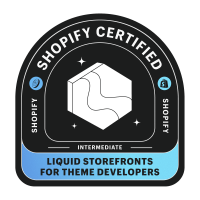The need for businesses to sell online grows daily as more and more people prefer to shop online. The end goal of every e-commerce business is to attract and retain customers. And one way to do that and beat the competition is to invest in the good design of product pages, as they play a key role in making your e-commerce business successful. In this post, you will learn what to pay attention to in e-commerce product design to make your e-commerce website appealing to your customers.
What is an efficient e-commerce product design? #
If you want your e-commerce business to succeed, uploading the product name and photos on your web presentation is not enough. In today’s competitive market, this is insufficient to generate sales. You need to attract your customers visually to your products, but most importantly, make them feel connected to your brand.
Each webpage showing your products and where customers can shop for them is where you can improve the chances of conversion. These pages are called product pages, and they make a good place for winning over your new customers.
As product pages are those that bring you revenue, it is important to design them in a certain way that will influence your prospects to become clients.
Customers want to have enough information about the product before making a purchase. On a product page, the customer will decide if a product is worth spending money on. That is why it is recommended to have complete product information and education about the product use on your product page.
On the product page, you should compensate for the lack of a salesperson and the in-person testing of the product. You can solve those problems with a chatbot or VR, but it is costly. It is financially expensive for you to implement those technologies onto your e-commerce website or mobile app. On the other hand, it is time costly for your customers to chat with a chatbot or use a virtual dressing room. So the better option is to research how to make a product page that will give the most information to your customers without wasting too much time.
You have to think of all the questions your customers want to know the answer to when it comes to specific products and give the answers on your product page. Here is the checklist that you should have by your side when making an e-commerce product design:
- Descriptive product name
- Recognizable images of each product
- Price, including any additional product-specific charges
- Clear product options (color, size, etc.)
- Product availability
- Easy “add to cart” option
- Concise and informative product description
Product page design should be easy to use so that the customers can immediately find what they are looking for. The important thing you need to pay attention to is that your e-commerce product design is responsive on all devices and types of screens. Product pages for mobile, tablet, and desktop have different user experience rules for interactive elements, so pay attention to that when designing your e-commerce solution.
What’s most important for you is that your customers can effortlessly find what they are looking for on your website. You are not only helping users to shop online, but you are also providing them with reviews, giving them the answers to their questions, and making the purchasing process as simple as possible. Thus make sure that these elements of your e-commerce product design are easy to use:
- Homepage
- Product search
- Each product page
- Filters and categories
- Shopping cart
- Checkout page or checkout field
In e-commerce product design, having visually nice-looking product pages is not enough. In e-commerce, product designers are there to optimize a website’s sales process and constantly improve the whole user experience. Thus, you need a person on the team who thoroughly researches and prepares audits and proposals on how sales can increase. The person in charge of product design must be data-driven and know your website visitors and customers to the core.
There are no two same e-commerce businesses, so you cannot copy someone else’s design completely. You need to adapt your e-commerce design to your products and services and the customers’ behavior and interests. For the success of your online store, you should analyze user personas and the purchase path in detail.
Visual aspects of e-commerce product design #
When looking at e-commerce product pages, users scan them in certain ways. If their most important parts are out of sight, an e-commerce company could lose significant revenue. That is why product design in e-commerce is critical for business success.
Here are the seven required visual characteristics of an efficient e-commerce product page.
- Eye-catching visuals. It’s no secret that the human mind loves visuals. It processes them faster than text and offers the capacity to guess the context. Visuals are so profoundly entrenched in decision-making that they must be top priorities for any e-commerce business. Pro-tip, you can use images, animated views, and videos to give your customers a complete understanding of a product. A good selection of visuals showing all the product details will lead to users making a quicker purchase than when you give them only a few pictures of a product.
- Added a white space. The picture must be appealing and clear to engage internet visitors to take action. White space has numerous usages in graphic layout; however, most importantly, it aids the eye in concentrating on what matters most.
- Permitted zoom-in zoom-out functions. Many individuals are interested in details, particularly regarding expensive products. Whether they’re seeking “that little button on the side” or wish to take a closer look, allowing the possible customers to zoom in and out on the products is beneficial.
- Included video clips. Nowadays, most people have access to LTE-4G data transfer, suggesting browsing videos on their smart devices has become the standard. A lot more interesting than photos, video clips additionally assist in narrating and helping a customer to make a purchasing decision.
- Easy navigation between pages. E-commerce companies should use breadcrumb navigation to inform users exactly where they are on the site. Navigating via breadcrumb helps visitors to understand the hierarchy of products as well as to be between categories.
- Write good descriptions for each product. Make sure that you have detailed reports on the product page. This will make customers more sure to buy the product and increase the chances of returns. This is very important if you only sell your products online.
- Highlighted Call to Action. CTA can be a button to add a product to the cart or anything else. The CTA needs to be recognizable and prominent from the rest of the page to engage the visitor to respond effectively. Keep in mind that your goal is to sell products, so your most important CTA is “Add to cart”. Choose a good color for this button and put it strategically near the product description. This CTA really should be eye-catching.
Pro tip: Go seasonal #
Making small sessional changes to your websites can help you retain customers and attract new ones. These can be inspired by the four seasons of the year or holiday seasons (Christmas, Easter, Halloween, etc.). This will keep your returning customers amused every time they come back to your webshop and attract new customers to your latest offers.
Designing product price #
Pricing should not be hidden from the customer. Designing transparent, understandable prices for e-commerce businesses’ online products must be a vital part of the website’s unique experience layout. This includes adhering to generally accepted user experience ideal techniques.
However, each option should be A/B tested to discover which one converts the best. Here are the most important factors to consider in e-commerce product price design:
- Clearly displayed product price
- Highlighted any product discount
- Enabled price ranges when it makes sense
- Displayed shipping estimates on-page
- Allowed currency selection
Using online reviews to design better products #
The e-commerce company should always display the product’s star rating Above the Fold because this is an important selling point that most shoppers want to see straight away. It’s then essential to have complete customer reviews lower down the page if shoppers want to browse what others have said about the product.
Social proof is when people are more likely to do (or buy) something because they see others doing the same. Statistics show that 97% of consumers say online reviews impact their purchasing decisions.
That’s why it’s vital to have some form of social proof Above the Fold to instantly be visible to online shoppers. The most popular way of presenting social proof is to show the product’s star rating near the product title.
Because this product design layout is standard, the customers will expect a star rating straight away.
The company should also include customer reviews further down the page so shoppers can easily see whether the product is popular and why others enjoyed it. This is vital because customers trust customer reviews 12 times more than product descriptions written by the seller.
It is recommended that e-commerce companies don’t delete or ignore negative reviews. Instead, they should always reply politely to complaints and resolve any issues as quickly and professionally as possible. This will inspire customers’ confidence in an e-commerce brand.
Do you want to learn more about e-commerce? Continue reading about → Digital marketing in e-commerce.

